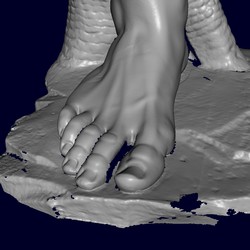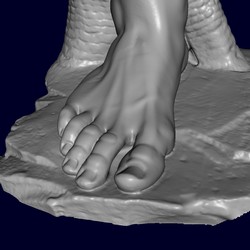Filling holes in complex surfaces
using volumetric diffusion
Steve Marschner, James Davis, Matt Garr, and Marc Levoy
Technical Report TR-2001-07
Computer Science Department
Stanford University
January, 2001


Abstract
We address the problem of building watertight 3D models from surfaces that contain holes---for example, sets of range scans that observe most but not all of a surface. We specifically address situations in which the holes are too geometrically and topologically complex to fill using triangulation algorithms. Our solution begins by constructing a signed distance function, the zero set of which defines the surface. Initially, this function is defined only in the vicinity of observed surfaces. We then apply a diffusion process to extend this function through the volume until its zero set bridges whatever holes may be present. If additional information is available, such as known-empty regions of space inferred from the lines of sight to a 3D scanner, it can be incorporated into the diffusion process. Our algorithm is simple to implement, is guaranteed to produce manifold non-interpenetrating surfaces, and is efficient to run on large datasets because computation is limited to areas near holes. By showing results for complex range scans, we demonstrate that our algorithm produces hole-free surfaces that are plausible, visually acceptable, and usually close to the intended geometry.
| Postscript with color figures | [PDF 1.9MB] |
| Video Submission | [RealVideo streaming 450kbs] |
| [RealVideo streaming 221kbs] | |
| [RealVideo streaming 34kbs] | |
| [RealVideo (640x480 450kbs) 8.2MB] | |
| [RealVideo (640x480 221kbs) 4.4MB] | |
| [RealVideo (640x480 34kbs) 720KB] |